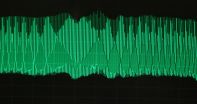Genetic discovery uncovers key tool for morphine production in poppies
Scientists at the University of York and GlaxoSmithKline Australia have made a key genetic discovery in poppies, paving the way for more effective painkillers
2015-06-25
(Press-News.org) Scientists at the University of York and GlaxoSmithKline (GSK) Australia have made a key genetic discovery in poppies, paving the way for more effective painkillers.
The discovery, published in the latest issue of Science, reveals the long sought after gene that is seen as a critical gateway step in the synthesis of the morphinan class of alkaloids, which include the painkiller drugs morphine and codeine.
The gene, called STORR, is only found in poppy species that produce morphinans. The STORR gene evolved when two other genes encoding oxidase and reductase enzymes came together millions of years ago. The resulting gene fusion plays a key role in production of morphine.
Scientists hope this will enable the breeding of bespoke poppy varieties, including those that produce the anti-cancer compound noscapine. Discovery of the STORR gene completes the set of genes needed for genetic engineering of morphine production in microbes such as yeast. Whether or not this can compete commercially with plant based production remains to be seen.
The breakthrough came when scientists identified poppy plants that were not able to produce morphine or codeine but instead accumulated another compound called (S)-reticuline. These plants were found to carry mutations in the STORR gene. These mutations cause a roadblock in the pathway to morphine production in poppy plants. The scientists were able to show that the non-mutated wild type gene can overcome the roadblock, by expressing it in yeast cells.
Professor Ian Graham, who led the research in the Centre for Novel Agricultural Products, based in the Department of Biology at the University of York, said: "Plants produce an amazing array of natural chemicals. Discovery of this STORR gene fusion provides us with new insight into how poppy plants have evolved to produce the most effective painkillers known to man".
The naturally occurring opiates of the morphinan class of alkaloids include morphine, codeine and thebaine. Morphine and codeine can be directly used as analgesic painkillers. Thebaine is widely used as the starting point for synthesis of a number of semi-synthetic opiates including hydrocodone, hydromorphone, oxycodone, and oxymorphone. Thebaine is also used to synthesise the opioid antagonist naloxone, which is used to counter the effects of opiate overdose.
Dr Thilo Winzer, lead author on the Science publication, said: "Opium poppy is one of the most important medicinal plants. The formation of the fusion protein was probably a key evolutionary event in its ability to synthesise pharmaceutically important morphinan alkaloids."
The discovery of the STORR gene completes the suite of genes thought to be required for production of morphinans in microbial systems. Plants remain a proven and efficient production system delivering Kg amounts per hectare of active pharmaceutical ingredients (API) at relatively low cost. Discovery of the STORR gene may enable an alternative supply route to be evaluated.
Tim Bowser, Head of R&D for GSK Australia's Opiates Division, said: "The discovery of the STORR gene provides us with a new tool for molecular plant breeding, making it faster and easier. GSK are using this discovery to develop bespoke commercial poppy varieties."
INFORMATION:
ELSE PRESS RELEASES FROM THIS DATE:
2015-06-25
Electrical engineers have broken key barriers that limit the distance information can travel in fiber optic cables and still be accurately deciphered by a receiver. Photonics researchers at the University of California, San Diego have increased the maximum power -- and therefore distance -- at which optical signals can be sent through optical fibers. This advance has the potential to increase the data transmission rates for the fiber optic cables that serve as the backbone of the internet, cable, wireless and landline networks. The research is published in the June 26 issue ...
2015-06-25
PITTSBURGH--Scientific controversies, from problems replicating results - such as with the now debunked association between autism and MMR vaccines - to researcher misconduct and sensationalism, have led to speculation of "trouble at the lab," as the Economist put it.
The National Academy of Sciences (NAS) and the Annenberg Retreat at Sunnylands recently convened top scientists from Carnegie Mellon University, the University of California, Massachusetts Institute of Technology, Georgia Institute of Technology and other leading institutions to examine ways to return to ...
2015-06-25
PITTSBURGH, June 18, 2015 - Researchers at the University of Pittsburgh School of Medicine have devised a computational model that could enhance understanding, diagnosis and treatment of pressure ulcers related to spinal cord injury. In a report published online in PLOS Computational Biology, the team also described results of virtual clinical trials that showed that for effective treatment of the lesions, anti-inflammatory measures had to be applied well before the earliest clinical signs of ulcer formation.
Pressure ulcers affect more than 2.5 million Americans annually ...
2015-06-25
Chloroplasts, better known for taking care of photosynthesis in plant cells, play an unexpected role in responding to infections in plants, researchers at UC Davis and the University of Delaware have found.
When plant cells are infected with pathogens, networks of tiny tubes called stromules extend from the chloroplasts and make contact with the cell's nucleus, the team discovered. The tubes likely deliver signals from the chloroplast to the nucleus that induce programmed cell death of infected cells and prepare other cells to resist infection. The work is published online ...
2015-06-25
Magnolias are prized for their large, colorful, fragrant flowers. Does the attractive, showy tree also harbor a potent cancer fighter?
Yes, according to a growing number of studies, including one from VA and the University of Alabama at Birmingham that is now online in the journal Oncotarget.
The study focused on squamous cell head and neck cancers, a scourge among those who use tobacco and alcohol. According to the National Cancer Institute, at least 3 in 4 head and neck cancers are caused by the use of tobacco and alcohol. The cancers have only a 50 percent survival ...
2015-06-25
Without new conservation efforts, the Democratic Republic of Congo (DRC) could lose up to 20 percent of its forests, unleashing a 60 percent increase in carbon emissions, says a new study by researchers at the University of Vermont's Gund Institute for Ecological Economics.
Published by PLOS ONE, the study explores Central Africa's tropical forests, which are among the world's largest carbon reserves. While these forests have historically experienced low deforestation rates, pressures to clear land are growing due to development, foreign investment in agriculture, and ...
2015-06-25
An international group of academic leaders, journal editors and funding-agency representatives and disciplinary leaders, including Rick Wilson, the Herbert S. Autrey Chair of Political Science and professor of statistics and psychology at Rice University, has announced guidelines to further strengthen transparency and reproducibility practices in science research reporting.
The group, the Transparency and Openness Promotion (TOP) Committee at the Center for Open Science in Charlottesville, Va., outlined its new guidelines in a story published in this week's edition of ...
2015-06-25
Rainwater could save people in India a bucket of money, according to a new study by scientists looking at NASA satellite data.
The study, partially funded by NASA's Precipitation Measurement Missions, found that collecting rainwater for vegetable irrigation could reduce water bills, increase caloric intake and even provide a second source of income for people in India.
The study, published in the June issue of Urban Water Journal, is based on precipitation data from the Tropical Rainfall Measuring Mission (TRMM), a joint mission between NASA and the Japan Aerospace ...
2015-06-25
The majority of the United States' poor aren't sitting on street corners. They're employed at low-paying jobs, struggling to support themselves and a family.
In the past, differing definitions of employment and poverty prevented researchers from agreeing on who and how many constitute the "working poor."
But a new study by sociologists at BYU, Cornell and LSU provides a rigorous new estimate. Their work suggests about 10 percent of working households are poor. Additionally, households led by women, minorities or individuals with low education are more likely to be ...
2015-06-25
A new study led by researchers at Scripps Institution of Oceanography at UC San Diego indicates a steady population trend for blue whales and an upward population trend for fin whales in Southern California.
Scripps marine acoustician Ana Širović and her colleagues in the Marine Bioacoustics Lab and Scripps Whale Acoustic Lab intermittently deployed 16 High-frequency Acoustic Recording Packages (HARPs)--devices that sit on the seafloor with a suspended hydrophone (an underwater microphone)--to collect acoustic data on whales off Southern California from 2006-2012. ...
LAST 30 PRESS RELEASES:
[Press-News.org] Genetic discovery uncovers key tool for morphine production in poppies
Scientists at the University of York and GlaxoSmithKline Australia have made a key genetic discovery in poppies, paving the way for more effective painkillers


